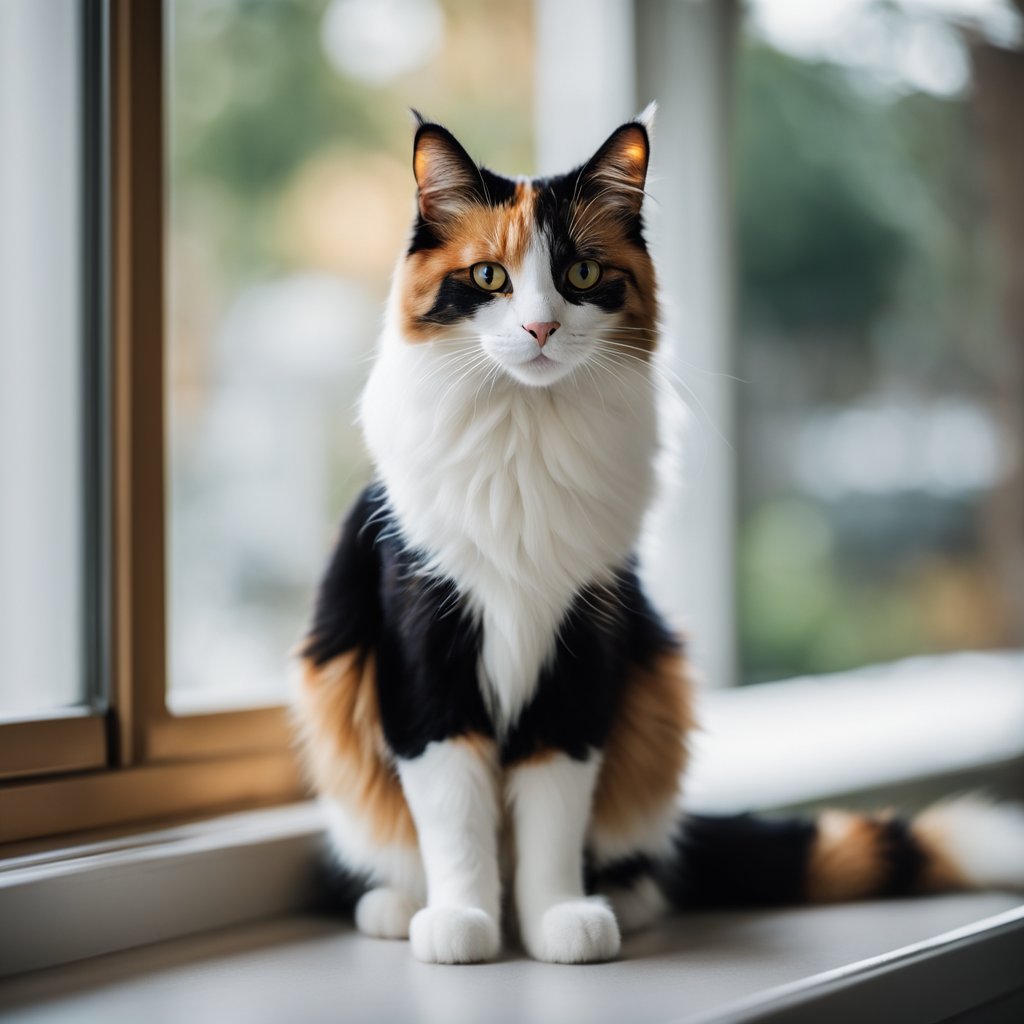In the realm of feline beauty, few creatures can rival the mesmerizing allure of calico cats. Their coats, adorned with intricate patterns of black, orange, and white, have captivated human hearts for centuries, making them one of the most beloved and recognizable cat breeds. But beneath this striking exterior lies a genetic story that is as complex and captivating as the cats themselves. Join us as we embark on a journey into the world of calico genetics, unraveling the secrets that give these remarkable creatures their unique and extraordinary appearance.
What is a Calico Cat?

Calico cats are known for their distinctive coat patterns, which consist of three colors: black, orange, and white. These colors can appear in various combinations, creating a beautiful mosaic effect on the cat's fur. The term "calico" is derived from the word "calico," which refers to a type of fabric with a similar patchwork pattern.
Why Are Male Calico Cats Rare?
:strip_icc()/27890562_1819212385038785_544807663670657024_n-5a931aba8e1b6e00361a9eec.jpg)
One of the most intriguing aspects of calico cats is that they are almost always female. In fact, male calico cats are extremely rare, accounting for only about 1 in every 3,000 calico cats. This phenomenon has puzzled scientists for decades, and it wasn't until recently that the genetic explanation behind this rarity was uncovered.
The Genetics of Calico Cats: A Tale of Two X Chromosomes
To understand the genetics of calico cats, we must delve into the intricacies of their chromosomal makeup. Unlike male cats, who inherit one X chromosome and one Y chromosome, female cats inherit two X chromosomes. This genetic distinction plays a pivotal role in the development of their distinctive coat patterns.
The X chromosome contains many genes that play a crucial role in determining an individual's physical characteristics. One of these genes is responsible for the production of the orange pigment, pheomelanin. This gene is known as the "orange gene" and is located on the X chromosome.
X-Linked Orange Gene: The Key to Calico Coloration
The orange gene is not simply present or absent; it exists in two different forms: one that produces orange coloration and one that does not. In female cats, both X chromosomes are active, meaning they can express both forms of the orange gene. As a result, female cats can have a combination of black, orange, and white fur, creating the iconic calico pattern.
However, in male cats, who only have one X chromosome, they can only inherit one form of the orange gene. This means that they can either have the gene that produces orange coloration or the gene that does not produce any color at all. As a result, male calico cats are extremely rare, as they would need to inherit two X chromosomes with the orange gene to display the calico pattern.
Why Are Calico Cats Always Female?

Now that we understand the role of the X chromosome in calico coloration, we can explore why calico cats are almost always female. This phenomenon is due to a process called X-chromosome inactivation, also known as Lyonization.
During early development, female cats randomly inactivate one of their X chromosomes in each cell. This means that only one X chromosome is active, while the other remains inactive and tightly coiled. This process ensures that female cats do not have twice the amount of gene expression as males, who only have one X chromosome.
In calico cats, this process of X-chromosome inactivation plays a crucial role in determining their coat patterns. Each cell randomly inactivates one of the X chromosomes, which means that some cells will express the orange gene, while others will not. As a result, the calico pattern is created, with patches of orange and non-orange fur.
Calico Males: A Genetic Anomaly
While male calico cats are rare, they do exist. However, they are considered genetic anomalies and often have underlying health issues. This is because the genetic makeup required for a male cat to display the calico pattern is also linked to certain genetic disorders, such as Klinefelter syndrome.
Klinefelter syndrome is a condition where males have an extra X chromosome, resulting in XXY instead of the typical XY chromosome pair. This extra X chromosome can lead to developmental and reproductive issues in male cats, making them less likely to survive or reproduce.
The Fascinating World of Calico Genetics
The genetics of calico cats may seem complex and confusing, but it is this very complexity that makes these creatures so unique and fascinating. Their striking coat patterns are a result of a delicate balance between two X chromosomes, X-chromosome inactivation, and the presence of the orange gene.
Through years of research and study, scientists have unraveled the secrets behind the genetics of calico cats, shedding light on the mysteries that have captivated us for centuries. And while male calico cats may be rare, they serve as a reminder of the intricate and awe-inspiring world of genetics that shapes the diversity of life on our planet.
Nhận xét
Đăng nhận xét